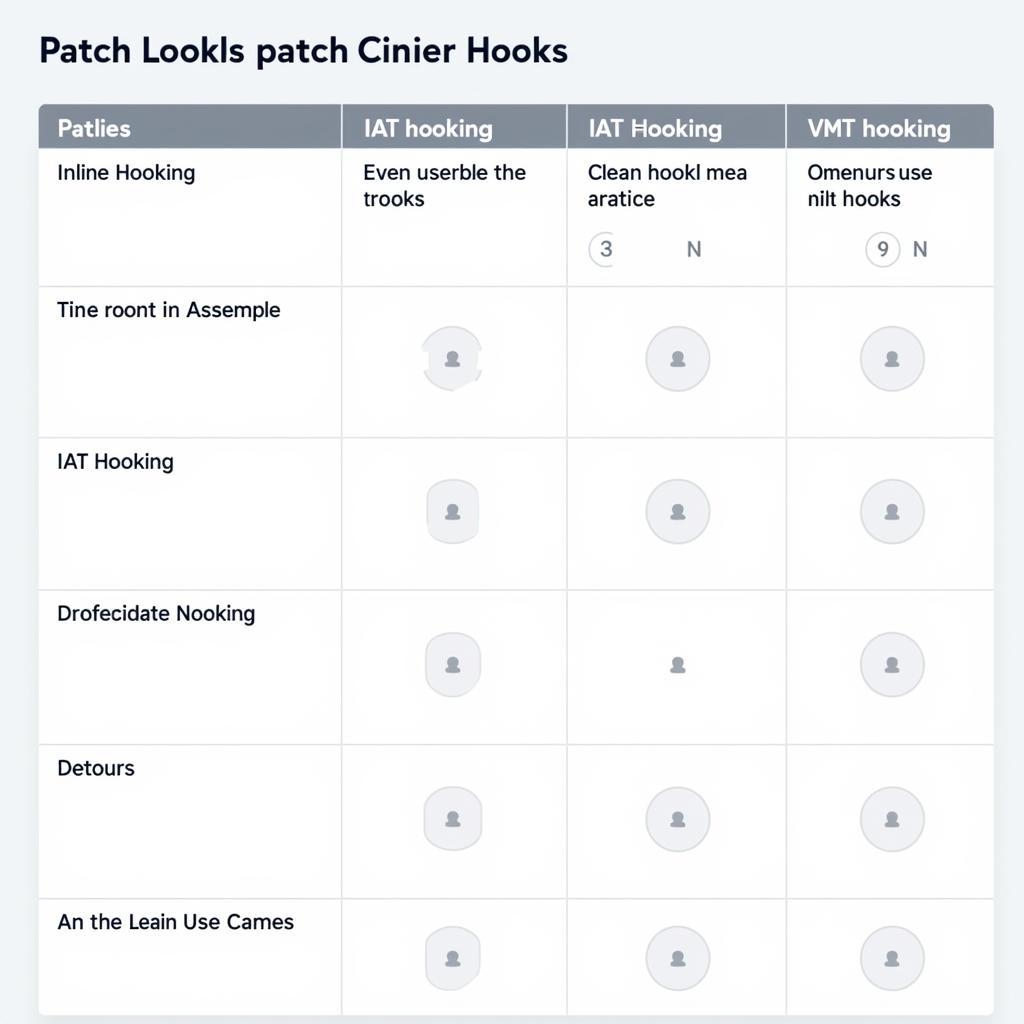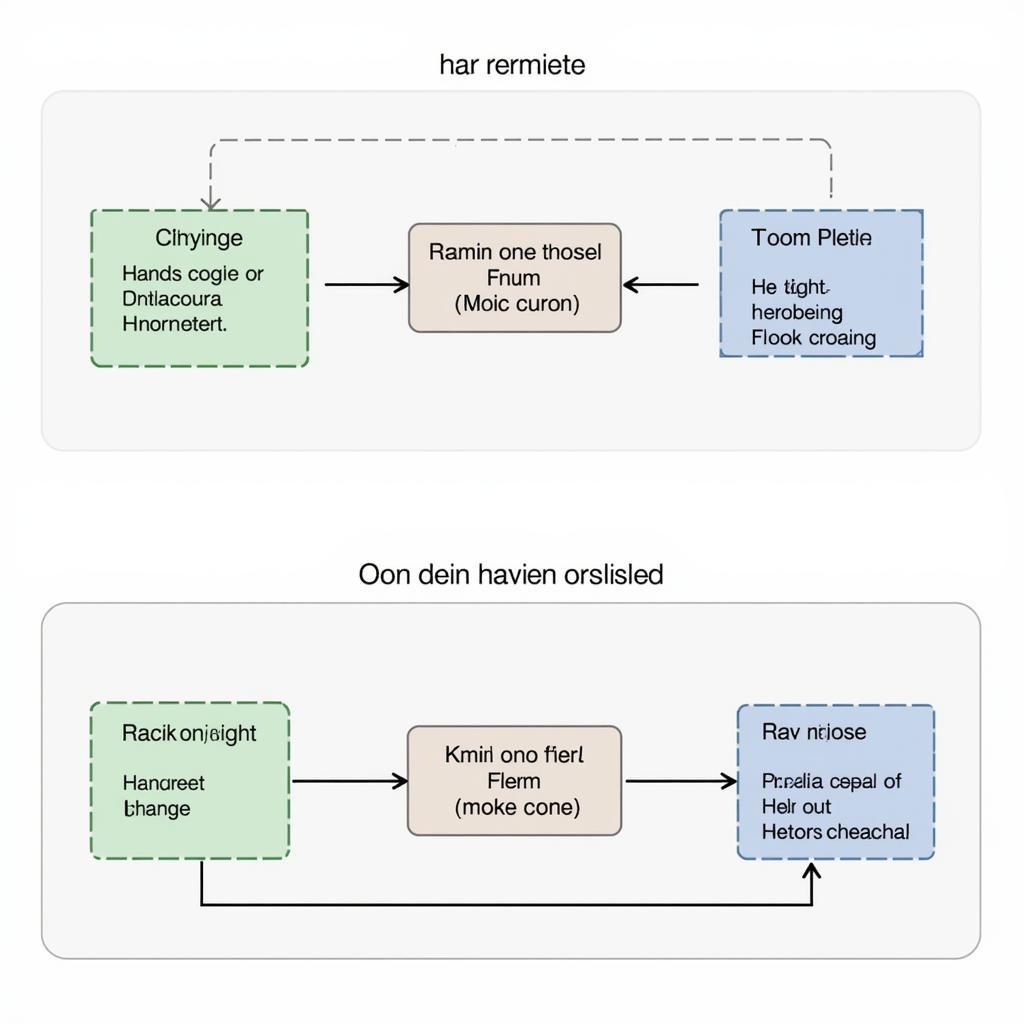Patch Hooks are powerful tools used in software development, particularly in game modding and reverse engineering. They provide a way to intercept and modify function calls, allowing developers to alter the behavior of existing programs without directly modifying their source code. This article will delve into the intricacies of patch hooks, exploring their various types, applications, and the considerations for using them effectively.
What are Patch Hooks?
Patch hooking involves modifying the original code of a target function at runtime to redirect execution to a custom function, also known as a hook function. This hook function can then perform additional actions, modify the original function’s behavior, or even prevent it from executing altogether. After the hook function completes its task, control can be returned to the original function to continue its normal execution.
Types of Patch Hooks
Several techniques can be employed for implementing patch hooks, each with its own advantages and disadvantages:
-
Inline Hooking: This is the most common type of patch hook. It involves overwriting the first few bytes of the target function with a jump instruction to the hook function. This requires careful manipulation of memory and consideration of code alignment.
-
Import Address Table (IAT) Hooking: This method takes advantage of the IAT, which stores the addresses of imported functions. By modifying the entries in the IAT, calls to the original function can be redirected to the hook function.
-
Virtual Method Table (VMT) Hooking: Specifically applicable to object-oriented programming, VMT hooking modifies pointers within the VMT to redirect virtual function calls to the hook function.
-
Detours: This technique involves creating a trampoline function that calls the original function after the hook function has executed. It is a more complex approach but offers greater flexibility and stability.
 Patch Hook Types Comparison Table
Patch Hook Types Comparison Table
Applications of Patch Hooks
Patch hooks find widespread use in various applications:
-
Game Modding: Hooks allow modders to extend game functionality, introduce new features, and alter existing game mechanics. This can range from simple graphical changes to complex gameplay modifications.
-
Reverse Engineering: By intercepting function calls, reverse engineers can gain insights into the inner workings of a program, analyze its behavior, and understand its underlying logic.
-
Security Software: Antivirus and anti-malware programs utilize hooks to monitor system calls and detect potentially malicious activities. They can also be used to intercept and prevent the execution of malicious code.
-
Software Debugging and Profiling: Hooks can be instrumental in debugging and profiling software by allowing developers to track function calls, monitor execution flow, and identify performance bottlenecks.
 Example of Patch Hooking in Game Modding
Example of Patch Hooking in Game Modding
Considerations for Using Patch Hooks
While patch hooks offer powerful capabilities, their use requires careful consideration:
-
Stability: Improperly implemented hooks can lead to program crashes or instability. Thorough testing is essential to ensure the hook does not introduce unintended side effects.
-
Compatibility: Hooks may not be compatible with all versions of a target program or operating system. Updates to the target program can break existing hooks, requiring adjustments or reimplementation.
-
Security: In certain contexts, patch hooks can be exploited by malicious actors to inject malicious code or compromise system security.
-
Ethical Considerations: The use of patch hooks can raise ethical concerns, particularly in the context of game cheating or circumventing software licensing restrictions.
“Patch hooks, when used responsibly, are a valuable tool for software developers. However, they require a deep understanding of system architecture and careful attention to detail,” says Dr. Annabelle Lee, a leading expert in software engineering at the University of California, Berkeley.
How to Implement a Basic Patch Hook (Conceptual Example)
This is a simplified conceptual example to illustrate the basic principles:
-
Locate the target function: Identify the memory address of the function you want to hook.
-
Save the original bytes: Backup the first few bytes of the target function that will be overwritten.
-
Inject the jump instruction: Overwrite the beginning of the target function with a jump instruction to the hook function.
-
Create the hook function: Implement your custom hook function to perform the desired actions.
-
Restore the original bytes: Within the hook function, restore the original bytes of the target function before executing them.
-
Jump back to the original function: After executing the original code, jump back to the point where the hook was injected to resume normal execution.
Conclusion
Patch hooks are a versatile technique with a broad range of applications in software development. By understanding their various types, applications, and the considerations for their use, developers can leverage the power of patch hooks to modify and extend the functionality of existing programs. However, it’s crucial to prioritize stability, compatibility, and ethical considerations when implementing patch hooks.
FAQ
-
What is the difference between inline hooking and IAT hooking?
-
What are the potential risks of using patch hooks?
-
How can I detect if a program is using patch hooks?
-
What are some common tools used for patch hooking?
-
Are patch hooks legal to use?
-
How do I debug a patch hook that is causing instability?
-
Can patch hooks be used on mobile platforms?
Common Patch Hook Scenarios
- Modifying game logic to adjust difficulty or add new features.
- Analyzing network traffic by hooking network API calls.
- Intercepting user input to implement custom controls.
- Injecting custom code into a running process for debugging or analysis.
Related Articles
- Game Modding Basics
- Reverse Engineering Fundamentals
- Software Security Best Practices
For further assistance, please contact Phone Number: 0902476650, Email: [email protected] Or visit our address: 139 Đ. Võ Văn Kiệt, Hoà Long, Bà Rịa, Bà Rịa – Vũng Tàu, Việt Nam. We have a 24/7 customer support team.





